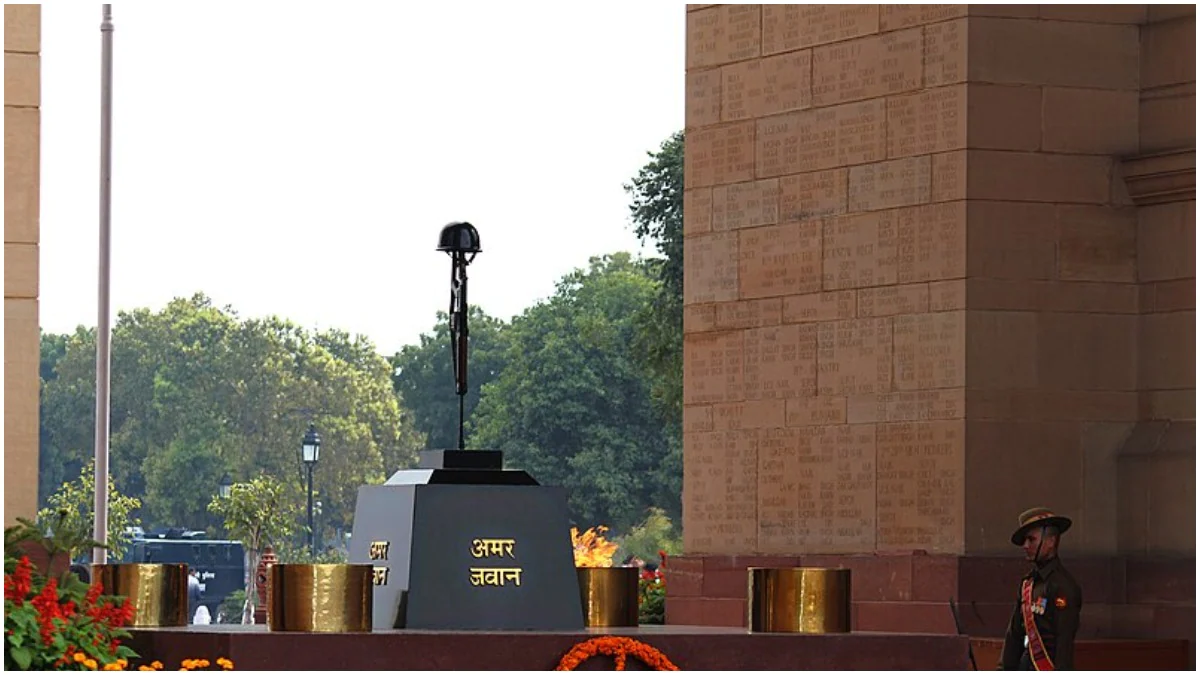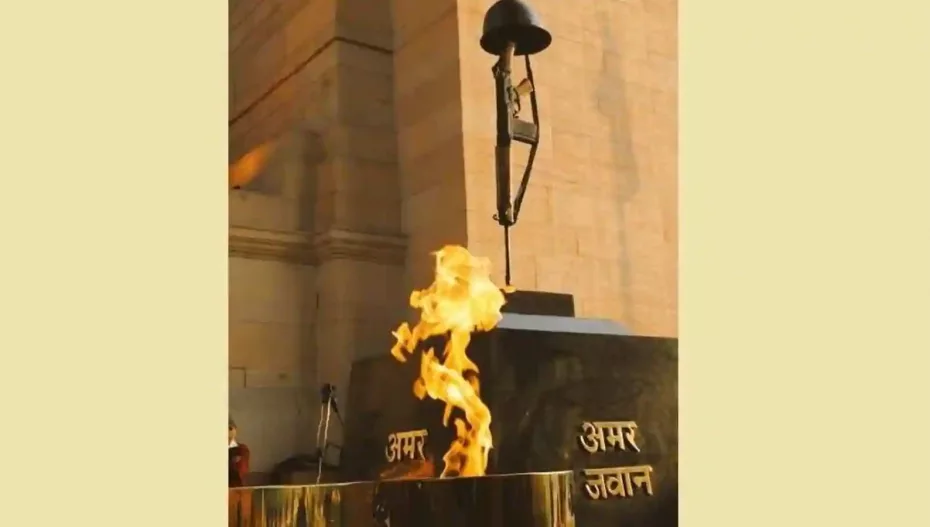In a historic step, the 50-year-old Amar Jawan Jyoti underneath India Gate in central Delhi was “put out” and a symbolic torch from it merged with the flame instituted at a few hundred metres away at National War Memorial. The Amar Jyoti has been an iconic symbol of the nation’s tributes to the soldiers who have died for the country in various wars and conflicts since Independence.
Established in 1972, it was to mark India’s victory over Pakistan in the 1971 War, which resulted in the creation of Bangladesh. The then Prime Minister Indira Gandhi had inaugurated it on Republic Day 1972, after India defeated Pakistan in December 1971.

This move by the BJP-led government has come under scathing attack from the Opposition. Come Republic Day on January 26 and Prime Minister Narendra Modi will kickstart the celebrations by a tribute-paying at the National War Memorial. While the Congress-led Opposition mounted an attack saying that it was a deliberate attempt to wipe our former Prime Minister Indira Gandhi’s indelible legacy in nation-building, the BJP chose to hint at the colonial glorification that the Amar Jyoti precincts entail. The war monument was originally built by the British to honour thousands of “Indian soldiers of the British Army” who were killed in Raj’s expansionist designs. Only after Independence, did it take on the Tricolour aspects.
In a formal ceremony, Friday afternoon, the eternal flame, kept alive with the help of cylinders of liquified petroleum gas, or LPG. One cylinder could keep one burner alive for a day and a half. The installation had four urns on it, with four burners. On normal days one of the four burners were kept alive, but on important days like Republic Day, all four burners were lit. These burners were what is called the eternal flame, and it was never allowed to be extinguished.
The Memorial was inaugurated in February 2019 by Prime Minister Modi. Spread across a 40-acre plot, the construction was achieved at a staggering Rs 176 crore. It has four chakras, namely Amar Chakra, Veerta Chakra, Tyag Chakra and Suraksha Chakra, and has the names of 25,942 soldiers martyred in the many wars and anti-terror operations post-Independence.












